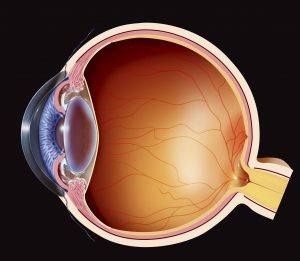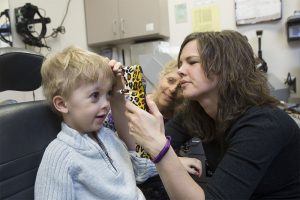Finding a Creative Way to Manage a Child’s Glaucoma

Since infancy, a male child with Axenfeld-Rieger syndrome–associated glaucoma had been under the care of Sharon Freedman, MD, a pediatric ophthalmologist at the Duke Eye Center.
Initially, his glaucoma responded well to medication, but, by the time he was 4 years of age, his intraocular eye pressure (IOP) was slowly increasing, and his optic nerves exhibited anatomic changes characteristic of glaucomatous optic neuropathy. The high variability of his IOP measurements Freedman obtained in the clinic compounded her difficulty assessing his need for glaucoma surgery.
Question: How did Freedman make it more convenient for the child's parents to help her monitor and manage glaucoma in this patient?
Answer: Freedman lent the patient’s family an Icare tonometer (Icare USA, Raleigh, NC; Figure), a painless and fast IOP monitor they could use in the home, from the Duke Eye Center’s Icare Lending Library. The device has allowed the patient’s IOP to be measured outside of office hours, helping Freedman determine whether to proceed with surgery.

FIGURE. The patient's mother can easily operate the Icare tonometer on her son
Because surgery for glaucoma has significant risks, Freedman says she avoids performing the procedure until it is absolutely necessary. “Based on this patient’s history, I anticipate his pressure will continue to rise,” she says. “Icare will help me monitor the pressure in the run-up to potential surgery.”
The Icare tonometer was available for the patient's family to take home because of the efforts of another patient. After the in-home use of an Icare tonometer improved the management of her glaucoma, she wanted other patients to have the same advantage, so she worked with Freedman to establish a fund for Duke Eye Center's Icare Lending Library. The lending library provides Icare tonometers to Duke patients with uncontrolled glaucoma who are facing potential surgery or to those with advanced or particularly difficult-to-control glaucoma.
Freedman uses the data she receives from patients using the Icare at home both to better manage patients’ glaucoma as well as to study variations in IOP to improve glaucoma management and outcomes in the pediatric setting.
For this patient, the Icare tonometer has so far demonstrated that a new eye-drop regimen is successfully controlling his IOP. “Although we may ultimately need to resort to glaucoma surgery,” says Freedman, “the IOP data provided by home monitoring have been reassuring to both the family and to me and have allowed me to feel comfortable using medications rather than surgery at this time.”
Ultimately, Freedman says, she’d like to see the Icare Lending Library grow beyond the Duke Eye Center to a national or international endeavor, expanding the ability of other glaucoma specialists to better monitor IOP and, ultimately, the disease.
“I hope to spread the realization that we have the ability to consider what happens to eye pressures outside the office, as we did with this patient,” Freedman says. “Icare is really catching on, and it’s exciting to be on the forefront of something that can be really enabling.”
